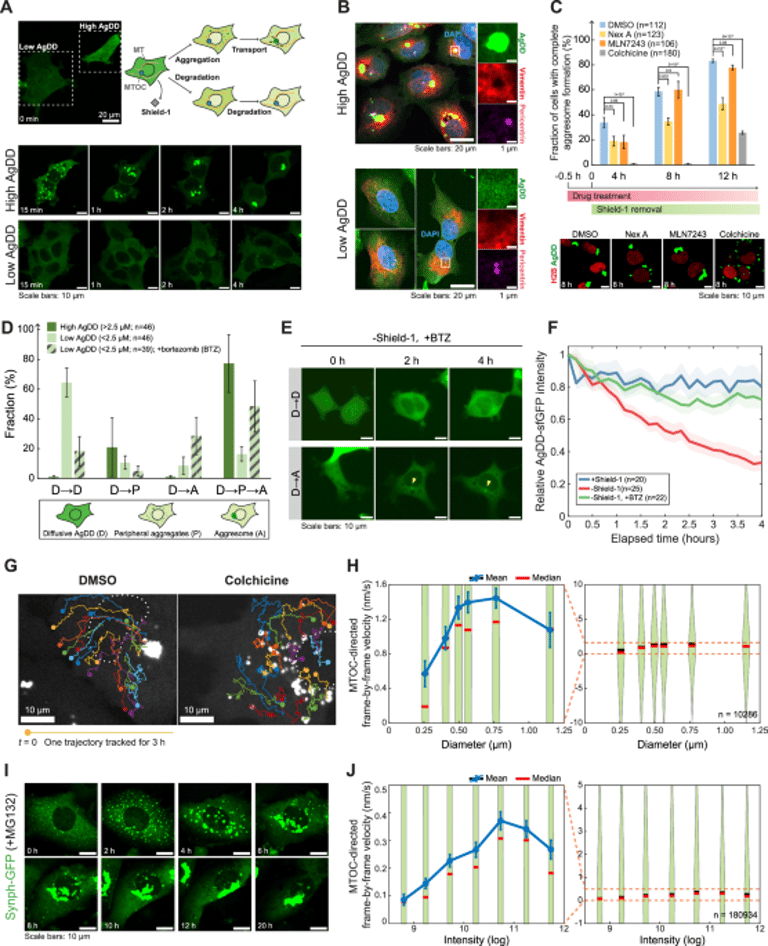Efficient Transport: Larger Protein Aggregates Move Faster and Pause Less Inside Cells
August 23, 2025
Recent research using single-particle tracking has shown that larger protein aggregates are transported more efficiently within cells, exhibiting longer engaged transport phases and fewer pauses, with their velocity positively correlating with size due to episodic disassembly and reassembly of the dynein-aggregate complex.
This size-dependent transport behavior is consistent across live cells and Xenopus egg extract systems, where larger aggregates display a 'stop-and-go' movement pattern driven by dynamic disassembly and reformation of transport complexes.
Interestingly, larger aggregates experience a positive size selectivity, moving faster and pausing less, which contrasts with the negative size selectivity observed in organelle and vesicle transport.
The study explores how misfolded and aggregated proteins are targeted and transported into the aggresome, a cellular structure involved in protein quality control, using both live cell models and Xenopus laevis egg extract systems.
Key proteins such as HDAC6, SQSTM1/p62, and CTIF/eEF1A1/Dynactin act as aggresome adapters, linking misfolded proteins to the dynein motor complex, with some adapters functioning simultaneously within cells.
Aggresome formation begins with peripheral nucleation of misfolded proteins into small aggregates, which are then transported along microtubules toward the microtubule-organizing center via dynein.
In Xenopus egg extract systems, aggregate transport relies on dynein-dynactin activity and does not depend on substrate ubiquitylation, as experiments show that deubiquitylation does not impair aggresome formation and ubiquitin chains do not significantly interact with the transport machinery.
Ubiquitylation is not essential for aggregate recognition and transport, indicating that the process is primarily driven by interactions between dynein and the aggregates themselves, rather than nonspecific interactions with ubiquitin chains.
Summary based on 1 source
